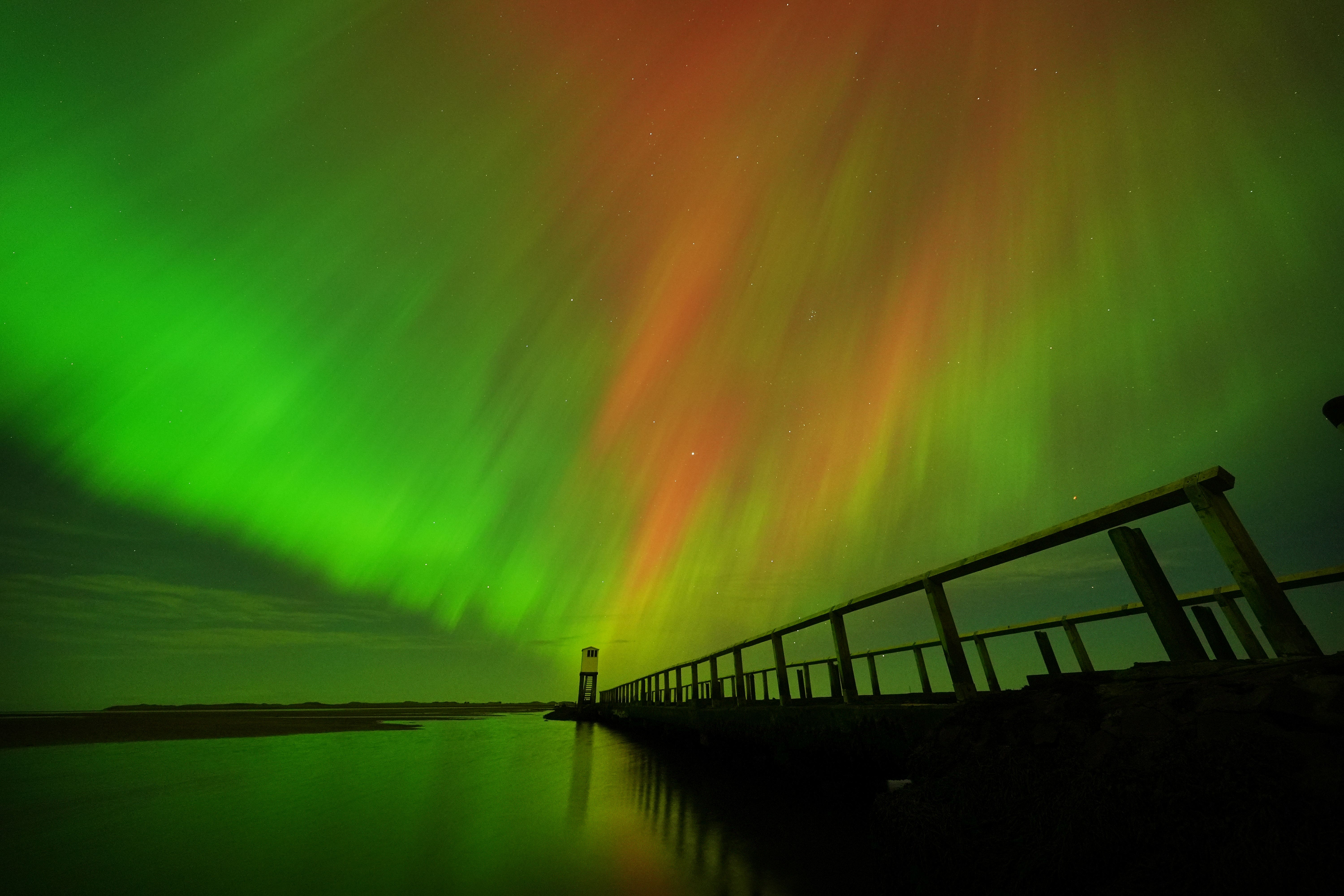Skygazers treated to Northern Lights show – with more to come, experts say
The sun has now entered its period of greatest solar activity.

Skygazers across the UK and Ireland have been treated to a stunning show of the Northern Lights – with experts saying there is still more to come.
The sun has now entered its period of greatest activity, which means Britons could be seeing more colourful displays of the aurora borealis until the middle of next year.
Our home star typically follows an 11-year-cycle, with periods of intense activity followed by a quiet phase.
During its active bursts, also known as solar maximum, the sun releases charged particles that travel through space at speeds of around one million miles per hour.
Some of the particles are captured by the Earth’s magnetic field and collide with oxygen and nitrogen atoms and molecules in the atmosphere.
These atoms and molecules then shed the energy they gained from the collision, emitting light at various wavelengths to create colourful displays in the night sky.
According to Nasa, oxygen emits either a greenish-yellow light – which is the most familiar colour of the aurora – or a red light, while nitrogen generally gives off a blue light.
The oxygen and nitrogen molecules also emit ultraviolet light, which can only be detected by special cameras on satellites.
Photos of the dazzling natural phenomenon were captured across England, Scotland and Ireland on Thursday night and could be seen as far south as Kent and East Anglia.
The current peak is expected to until mid-2025, according to the Royal Astronomical Society.
After that, aurora displays will only be visible in high latitude countries such as Alaska, Canada, Iceland, Scandinavia, Finland and Russia.
The southern lights, or aurora australis, can be observed in Antarctica, New Zealand and Australia.